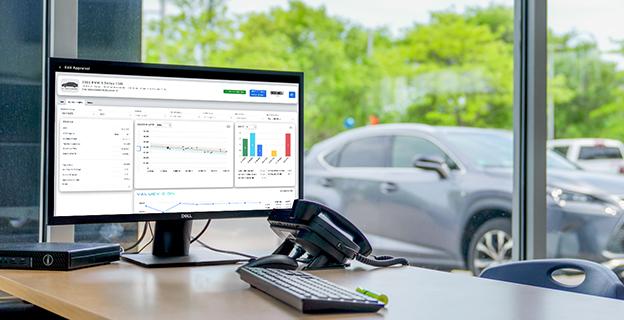4 Min Read • July 30, 2025
3 Ways Dealers Use Automotive Inventory Management Software

Not too long ago, CDK conducted an informal survey of dealerships to see what inventory concerns plague them most. Some common threads emerged, with many respondents expressing difficulty with:
- Figuring out what used vehicles people want
- Predicting how much used car prices are liable to change
- Acquiring vehicles in a competitive market and selling them quickly
Here, we dive into these pain points and explore how a robust auto inventory management software solution can help alleviate them.
It’s Hard To Know What People Will Want
Given that shoppers visit dealerships primarily to look at and test-drive a specific vehicle, having desirable models on the lot is of utmost importance. But consumer desires aren’t fixed. They can change for any number of reasons: life events, new or discontinued incentives, a demographic shift in the region, the weather — you name it.
Those factors are difficult for a dealership to track and analyze on its own, which is why many of the dealers we surveyed said they see the most value in a car inventory management software solution that can predict shopping trends. This information would help dealerships decide what vehicles to purchase from an auction. Since such models could take weeks to arrive on the lot, stores need to know, with some level of certainty, that consumers will still want these vehicles next month.
Pricing Used Vehicles Isn’t Easy in the Modern World
Volatility is the norm in the used car market. Pricing changes frequently based on supply and demand, and consumers can easily check out local inventories and model prices with just a few keystrokes and clicks of a mouse. That makes it very difficult to remain competitive without paying constant attention to what other dealerships are doing and selling.
For instance, if the store across town acquires similar used vehicles but undercuts you, shoppers will know and presumably shop the better deal. Likewise, if you’re the only store in the area to have a particularly popular model or if the OEM issues a recall that promotes consumer doubt in a product you’re trying to sell, these things could affect demand and your pricing strategy.
Dealership Inventory management software can take the guesswork out of the equation and dealers are eager for that technology. Many expressed interest in a resource that can monitor the local market situation in real time, taking into account all of these factors and more. If the system can sort the data by any increment and produce an accurate forecast, the store could determine the best price for the moment and presumably reap the most profit.
Obtaining and Turning Over Inventory Quickly Has Become More Important
To maximize profits, dealers must acquire, prep, sell and deliver vehicles as quickly as possible. Acquiring the popular models has become more of a challenge: When everyone in town has access to market data, you need to act quickly at the wholesale and retail levels if you’re going to beat the competition.
Moreover, as mentioned above, stores need to anticipate what people will want tomorrow, next week and next month. If you want to buy a vehicle from an auction that’ll take some time to arrive, you’ll need to consider your bid carefully, as the vehicle’s value today may change by next month. Inventory management software can help with that.
It can also help you keep track of all the moving pieces. With some models in transit from a wholesaler and others coming in via a trade-in, it’s difficult to know what should take priority on any given day. But quickly prepping models for the lot and posting pictures of them on the dealership website is key. Shoppers serious about purchasing a vehicle today are likely searching the web for the model they want. If a dealership doesn’t have up-to-date listings, it could be missing out on that business.
No dealer wants a model to sit. It takes up valuable space on the lot, and shoppers may take note of it and use that information as leverage in the negotiation. With an effective inventory management tool, that’s unlikely to happen — at least on the regular.
The program should help dealers steer clear of models that’ll be slow to sell and help them appropriately price what’s on the lot. It may also suggest shifting an unsold car over to auction to recoup what’s possible before it becomes a loss.
Share This









